In the metaphorical text of this last fragment entitled ‘Rigor mortis ostativo’ the right-duty of the “defendant subject’ is disentangled.
The
behavioural terms that the defendant-subject has chosen outline an
apodictic sign, which is willing and ready to be displayed.
The ‘right’ is a limit prone to disentangle the events of a chosen path.
The
basic material for getting the right is the same being-subject that
takes shape in the comparison between the subject and the right in a
merging of events, which becomes the foundations of the
moral-judicial-monster in a sudden organic disposition, which nullifies
any willing motion.
In
the action of ‘claiming’ the singular tissues of the individual asking
for a right become tissues of a decomposition of its own existential
peculiarities.
The applicant calls the right to ask in the invocation of the right.
The Rigor mortis is now Decay.
‘Only the right that is mine, which belongs to me, cannot be lost.
But I can renounce that right that does not belong to me,
the right belonging to the people.’
‘The Ego and its Own’, M. Stirner
SPECIAL PROCEEDINGS
1. SUMMARY PROCEEDINGS
‘A
summary proceeding is a pre-trial extended to the merit, which takes
place in a courtroom in the presence of an investigating judge
(according to the stage when it is requested) and can be classified as
unilateral request for a trial. It is characterized by the decision
taken on the state of the preliminary investigation, which has full
probative value (documents of the prosecutor’s file) at this stage.
In
case of conviction a summary proceeding implies the reduction of the
sentence to a third in order to encourage the private party to ask for
this procedure.’
APODICTIC
A
synthesis of a syncretic pre-trial emerges from and depends on the
explicated and judicious term of an examiner, in a perpendicular
permeability.
The
Abnegation in explicating the behavioural terms emerges when an
ostensive simulacrum is erected, a simulacrum of the prevailing work of
the one who examines.
The
structure determined in a substantial manner emerges in an apotheosis
of cross-reference in a liturgical ceremony, where the ‘judgement’ goes
beyond the ‘Pre’ in a nullified going forward.
The correspondence is a collimating between a correspondent examination and a Ceremony that corresponds to the Examiner.
The relation of belonging is a simulation between a corresponding collimating and a corresponded exam.
The
simulacrum of the simulation is the corresponded in the correspondent
leading role of the synthetic assimilation of the ‘role’ and of the
collimating ‘guide’ in the word ‘defendant’.
The
Demiurge chairing a liturgical Ceremony poses the clarification of a
symptom that crosses and prevails over the assumption of a ‘judgement’,
which has a redundant effect on the ‘Pre’ in a nullified going forward.
The
scheme of a prevaricating obtaining emerges insidiously as it builds up
an exam in a collimating ceremony of an official rite.
The
Demiurge (and the synthetic form ‘Examiner’) gives a pregnant ‘look’
and disposes the premonitory signs, which are outlined in a imaginative
manner in a prevailing liturgical Ceremony, where the correspondent
‘leading role’ is officiated by the word ‘defendant’.
The
back consideration of a simulation of Abnegation is so called ‘Dead
Form’, which is defined by an indefinite ‘ultimate Defunct’.
The
‘Dead Form’ delineates itself irreversibly in an imaginative synthesis:
back-induced Extension in simplification effectiveness.
The
role and the corresponding collimating ‘guide’ correspond in a reduced
premonition of the synthesis, which is evocated in a reverential
availability: ceremonial assonance between the word ‘defendant’ and a
‘Dead Form’, pronoun of an ‘ultimate Defunct’.
An
inclination is produced by the analogy between an ‘inclined’ that
claims and an ‘inclined’ that takes part to the official liturgical
ceremony while preparing the simulation of the leading role in a
dissimulation of prepared documents.
The
synthetic Abnegation of an exam induces the listening of the delegated
terms, which imprint their essence in a ‘Dead Form’ that detects (and
reveals) a substantial product in an imaginative manner and in an
officious Ceremony of a rite where the inclination is analogous with the
word ‘defendant’.
‘Those
who carefully prepare themselves for negotiations know their final goal
and can evaluate the expectations of their interlocutors. Their
starting point is a strong one. On the contrary, those who do not know
the rules of the game or do not realize that they are involved in a
negotiation even if they are in the middle of it, are in an extremely
weak position.’
‘A guide to negotiation techniques’, J. Winkler
Now the requirements for summary proceedings are:
A) A request from the defendant
B) An order of eligibility from the investigating judge
C) A possibility for new evidence.
CIRCUMLOCUTION OF A DEMIGOD
A premonition changes the undulating course of a Consecration.
The
determination induced by an event simulated in a Simulacrum moves and
goes back to undulate the choices of the volitional Events (given by).
Evolution practised through the introduction of an asserting logic.
The
distinction between something that is asserted and the one who asserts
implies the non-distinction between the practical form and the formless
‘practise’ of a solemn sensational ceremony.
The
word ‘defendant’ is freed (but not distinct); it permeates and is
permeated by a ‘Dead Form’ in a siege of its affirmative abilities.
The
transposition of a predetermined motion is an indirect arrangement
pre-imposed in a ceremony post-planned in an indirect but premonitory
manner.
The
disposition of the events carries a translated deduction, which is
inclined in reversibility between Abnegation and Invocation.
Elements melt and split in a ‘Pre’ or a ‘Con’.
The stentorian Abnegation reminds of the Invocation in a programmatic (and summary) assumption of responsibility.
Redundant in a ‘Con’ and a ‘Pre’, the sign of the effect postpones, expresses, holds, keeps, moves and stops.
The
caducity is the extension of a ‘Dead Form’ that simulates the cadence
of the sign-effect in a disposition of affirmation of its significance.
The
arrangement is to deduce the sign from the effect, which remains
introductory to the ‘Dead Form’ that closes the premonition of the word
‘defendant’ in an impeded space.
The
cult evoked in the hyphenation is a prodome of an affirmation of
significance in a correlated medium that draws from the indentions ‘Pre’
and ‘Con’.
Introduction
to an Abnegation of an extended and exhausting premonition in an
arrangement of Levels in junctions of significance.
As he postpones the prominence of a ceremony, the Examiner gives the doing to the ‘saying’.
Extirpating
a recondite repetition of the effect-sign, which is not nothingness,
does not give events translated in a returned analysis to the doing, of
sedentary parameters in the Temple of prophecy.
The Ceremony in a liturgical rite predisposes and postpones possible lumps of ‘introduction’ waiting for a premonition.
The
wait (waiting is a sign) is spasmodic in an invitation to an invocative
cult given by an anesthetized suffix: to mark the preeminent
anaesthesia.
The relation of representation is Abnegation in the ceremony.
The Demiurge exposes.
‘If someone destroys the Temple of God, God will destroy him:
For the Temple of God is sacred, and you are this Temple.’
(Paul, Cor. 3.16)
‘Following
the reform introduced by bill 479/99, the defendant has no chance to
put forward two types of request for summary proceeding:
-
Ordinary summary proceeding according to the first paragraph of article
438, for which the prosecutor cannot express any dissent and the judge
is compelled to carry it out.’
EXTENSIVE EFFECT OF A CEREMONY
An insignificant determination is the product of a certain Invocative Cult.
The
perspective is determined in a planned premonition in an afflux that
becomes and differs in its undulating motion and in an exposition of
data, ‘given’ by the undulating movement that reifies all documents and
that differs from the undulation.
The
Invocative Cult predicts the ‘Dead Form’ and exposes its Premonition in
indistinct Flows of acquiescence that permeate between a ‘saying’ and a
‘doing’.
The exposition of a rite leads to the Demiurge.
Exacerbated interpretative modulations extend the ‘exterior’ in a wider range of extensiveness.
The
ostensive Ceremony in a liturgical rite is the extensiveness of wider
hypothesises heading to premonition: Omni comprehensive in a major
reified form, and in a Ceremonial minor form.
The degree of understanding in the introduction of an elementary elected component: a major form of a less major ‘measuring’.
The stratification of the structural elements poses a mutation between an ‘elected’ and an ‘elementary’.
The Demiurge chairs the procedural rite and the premonition.
The ceremonial disposition is the direct connection between an ‘elected’ and an ‘elementary’.
As
it promises a process of elected premonition, the basic programmatic
procedure gives the ‘Pro’ and the ‘Pre’ in different but corresponding
stages.
The
invocative Cult claims the promise of Abnegation in a correspondent
undulation of the elements that constitute the stages in sequence of
decomposed axioms.
Promising
is the promise of a premonition. The ‘Dead Form’ looks for the word
‘defendant’, in which the Demiurge is the Omni comprehensive stability
in the claiming of the promise.
The singular bursting reduces the premonition to extended allocutions of non-significant determinations.
The
extension of the (pro)noun of the word ‘defendant’ is the course of the
repentance of a ‘Dead Form’, where speculative signs reduce the
singular traits in a disruptive disposition of forms with guidelines.
Postponed in a predetermined premonition, the guidelines assume the role of the word ‘defendant’.
Data of synthesis complete the repentance of the stage of a ‘Dead Form’.
The Demiurge is the affirmation: the response is the volitional act in a liturgical rite.
‘Collective
feelings, which the penal law of the people protect in a determined
time of their history, came therefore to penetrate the consciences which
were precluded to them up to that time, or they increase their power
where they did not have enough of it. Only on condition of acquiring a
deeper intensity than that they had before can the community as a whole
be aware of them in a stronger way, for it is the only source to which
they can draw the necessary strength to impose themselves to the
individuals who were refractory to them.’
‘The rules of sociological method’ Dunkheim
In
a summary proceeding conditional that allows the defendant to
subordinate his request of summary proceeding to new evidence, which has
to be examined during the trial by a judge, the applicant must indicate
sources of evidence that are not precluded by the law (…).’
CONSTITUTED IN DEVOTION
An
affirmative bond establishes a definite introductory ductile
arrangement in an introspective delay of programmatic junctions.
The basic material melts in an intricate correlation between recurrence and re-collocation.
Automatisms of membership form the delay of junctions that intervene disposed in a (non)sense and premonitory feeling.
The
Volitional Being can be divided in reflexes of comparison extended in a
constant flow towards the beginning of a ‘Dead Form’.
The affirmation of ductility of the ‘definitely Defunct’, defined and given by a definition, is exemplary in the recurrence.
The dead-essence material is the introduction to a ceremony of a liturgical rite.
In Abnegation to the rite there is an expression of given significances of a supplementary supplication.
The affirmative bond must now establish itself in a programmatic dependence in the Volitional Being.
The
Ceremony calls the Demiurge in a rite, and the Demiurge affirms the
dead material in an act; the dead material is the specific essence of a
‘Dead Form’: an expedient of the word ‘defendant’.
The flow of the dead material is composed and activated in a mixture of explicative ramifications.
The flow of the dead material is equivalent to the essence of the Abnegation of reflexes of the ‘Dead form’.
The pre-agony stage is a balanced substrate in an affirmation of the ‘SELF’ in a sequence of ‘oneSELF’.
The consequential pro(noun) is the word ‘defendant’.
The absence of shared affections is the procedural ‘ethic’ produced in the liturgical rite.
The
substantial flow of dead material supporting the ostensive Ceremony is
the procedure of a pre-agony premonition that feeds the aptitude of the
pro(noun) of a ‘Dead Form’.
The
deprecating act of a bursting of the repentant allocutions is given in a
‘paragraph’, where the introjections of the ‘Dead Form’ of the word
‘defendant’ goes across (and not behind) behavioural appearances
infected in symbiosis by postponed elements of a repentance.
It
is the instinct of a community (ancestry, generation, flock, community)
that feels the states and desires as valid, which it owes its
conservation, for example obedience, reciprocity, reverence, moderation,
and therefore it represses anything that opposes and contradicts them.’
‘Will of Power’ F. Nietzsche
THE STAGE OF CELEBRATION OF THE RITE
‘The
natural site to forward the request for summary proceeding is the
preliminary hearing (article 438). But the request can also be forwarded
during other trial stages; after the prosecution, when another
proceeding is introduced: for summary judgement (article 452, paragraph
C.2), immediate judgement (article 458) of penal decree (article 461,
paragraph C.3), direct subpoena (article 555, paragraph C.2).’
Evidence constituted in appeal in the explanation of a false line.
A digression in ‘gnashing’.
The exposition of a ceremony in a liturgical rite is being officiated…
‘The
verdict of guilty or not guilty is always subjected to recourse in
Cassation, even if there exist limits to the possibility of appeal
(article 443) as a counterpart to the benefits for the defendant or the
prosecutor.’
THE JURISPRUDENTIAL DOCTRINE
The introspection introverts a figure, which becomes a walk-on of the word ‘defendant.
Specific figures introduce their substrate and emerge infected in an organic disposition.
The graft of figures is the being of the syllogistic representations.
The dead material is the cadaverous essence of a ‘Dead Form’.
The disposition is the prophetic pre-agony where Abnegation is undeniable and imaginary introjections of decomposition.
The Demiurge expresses a doctrine of jurisprudence through the Examiner.
The
decomposing course is the ‘margin’ concerning the Ceremony of a
liturgical rite; a jurisprudential act is a decomposed significance of a
premonition.
The substance of the decomposed being is Abnegation towards a cure of decomposing syllogism.
The ‘Dead Form’ is the release of dead material.
The
passion predicting a decomposed allusion of significances is skilfully
inserted into a ‘Dogma’, decomposed in its being accomplishment of the
cure of the Jurisprudential Doctrine.
The
detection of a reverential cure is the solution of formal data
referring to the accomplishment of an affirmation: the revelation is the
substrate of the accomplishment of the cure.
A given detection tries to infect a disruptive repentance.
The
disposition of a rite in the flows of comparative accomplishment
between dead material and ‘Dead Form’ is Abnegation in a liturgical rite
where the execution is given in a jurisprudential manner examined by
the Examiner.
As it is being introduced in a figurative manner, the walk-on is an appearance of an informal form, disposed in premonition.
The
assonance of the figurative forms is arranged through the collocation
in a dead material of the figurative being of a ‘Dead Form’.
The liturgical Rite offers images of anesthetizing significances.
The
representation is the release of the dead material in an extended
pre-agony prophecy where the skilful Dogma is the explicating concept of
the Jurisprudential Doctrine.
Do
not accumulate treasures on the earth, where moth and rust consume, and
where thieves burgle and steal: instead, accumulate treasures in
heaven, where nor moth or rust consume, and where thieves neither burgle
or steal.’
(Matthew, 6, 19-20)
2. SENTENCING UPON THE PARTIES’ REQUEST
A) Generalities
Sentencing upon the parties’ request (so called settlement) is a special pre-trial proceeding of a rewarding type.
Unlike
a summary judgement, which is reserved to the unilateral will of the
defendant, a settlement presupposes an agreement between the parties not
only as concerns the proceeding but also the sentence to be pronounced,
even if the possible disagreement of the prosecutor remains amenable to
the control of the presiding judge. The dies-quo of the request for
sentencing can also intervene before the execution of the penal action
as the latter can be anticipated during the stage of the preliminary
investigation (article 447, paragraph 1 of the penal code).
HERMETIC COFFIN
The
‘territory’ in which (and for which) the cure prepares its action is
established by residues of programmatic observation, where (and for
which) the reification of immunological instances is infected through a
dogma of composition in content: the pre-judicial Being.
The ‘Pre’ is a profitable container of affirmative data of rules pre-established by the ‘judgement’.
The
context in which the affirmation of the dead material exhibits an
unquestionable cadaverous essence, nullifies the falsification of the
‘Pre’ in the word ‘defendant’.
The judgement expresses its ‘Pro’ in wide factual visions.
The
assertion ‘Funeral rites of the not guilty’ is the sharing of a
memorandum (product and material) of a synthetic theory of affirmation
and cure.
The nullified Being is the beginning of the word ‘defendant’.
The
establishment of effective jurisdictional forms leads to the ‘Dead
Form’ to inhalations of beneficial returns in a transience of pre-agony
influxes.
The premonition is the synthesis in an epigraph of obtaining the essence of the dead material.
The liturgical Rite is episodic in a variety of forms.
The
dilatation of a ‘contrast’ in an absent being is the predicted form of a
prophecy, disposed in a ceremony in which and for which the Absence of
an absence is celebrated.
The
word ‘defendant’ is close to a funeral rite (in an assertion of
‘possible guilty’), while the cure of the terms is the absence of the
absence itself in an ‘it-itself’: there determination is absent.
The dead material is the essence of an absent being in the presence of a substantial liturgical Rite.
The same in itself is the accomplishment of a ceremony chaired by the Demiurge.
Absence and Essence are present in a prophecy.
‘Dispersion
is never a good sign in a negotiation. If enthusiasm and interest have a
reassuring effect on the counterpart, the anxiety of coming to a
conclusion only shows weakness. So let the others quarrel to conquer
your attention. If you want to lead your interlocutor to a decision you
need, along with good doses of readiness, the presence of a rival.’
‘Divide et impera’, ‘A guide to negotiation’, J. Winkler
‘The
rewarding of this institution is reduction of the sentence to a third
of it, exemption from payment of legal expenses, exemption from
additional charges and restrictions, except for confiscation (if the
sentence is shorter than two years), and extra-judicial ineffectiveness
of the sentence (for example as concerns damages compensation).’
DISAFFECTION OF AN IMMUNE-THERAPEUTIC RITE
Extensive
traces in rigid ramifications of therapeutic speculation dispose
themselves – waiting for an intrinsic voluntary and volitional therapy –
in thematic juxtapositions, which give and introduce expositions of
practices of a liturgical rite.
Marginal notions in a reflux of assertions lay a sacrificial bridge in an afflux towards the Temple of prophecy.
Sacrifice is the face of a ‘Dead Form’.
The
traces require a composed form in decomposition where the dead material
expels the flowing flux of the ‘SELF’ inside the ‘Dead Form’ and where
reification predicts its premonition to the word ‘defendant’.
Being
reclaimable in a reflex of a reflux the dead material carries its
essence and inserts itself in an expropriation of its ‘SELF’ in a
falsification of the very being of a ‘Dead Form’.
A priori the word ‘defendant’, which is prone and ductile, searches a terminal contact with the Demiurge of a liturgical rite.
The
mediator of a Examiner is the cure of this contact that is penetrated
by an outgrowth of dead material producing fetishist inputs to the ‘Dead
Form’.
Repentance is infected.
The afflux of the flowing flux opens itself in countless histological interactions of dead material in an official rite.
Postponing
the Invocative Cult in a structured way exposes the ‘Dead Form’ to
infinite dispositions of prominent memorandum in a procedure of
premonition.
Repentance
is disruptive in a correspondent jurisprudence, and it articulates
consequential stages in an official and ostensive rite.
Histological
in the flowing flux of a prefix suffix: post and prefigure a
premonition where a posterior anteriority is chaired and postponed.
If what is desirable cannot be an object of observation, and yet it can and must bedetermined
by a sort of mental calculation, it is impossible to impose any limit,
if we can say so, to the free inventions of imagination, which always
tend to look for the best.
One
can solve this practical dilemma if the desirable is health, and if
health is something definite as a matter of fact, for in this case the
term of the effort is at the same time as definite as a matter of fact.
It is no longer a question of desperately pursuing a goal which escapes
as it is being sought after, but rather of engaging oneself with regular
perseverance to keeping the normal state and restoring it if it is
troubled or its conditions happen to change.’
‘Rules relating to the distinction between normal and pathological’
‘Rules of the sociological method’ Durkheim
D) Proceeding
‘A
request for a plea bargaining is permissible during the course of the
preliminary investigations (in which case the correlated request makes
the investigated party acquire the qualification of defendant, article
60, paragraph 1 of the penal code), of the preliminary hearing (…) and
when preliminary statements are produced in two cases:
A) When the defendant presents the request according to the rule of law but the prosecutor does give consent;
B)
When the parties reach an agreement but the investigating judge refuses
the alternative procedure as he does not consent on the terms of the
settlement (…).
LABYRINTH OF HYPOTHESIS: HYPOSTASIS AND HYPOSTATIC
Formations of derivative allocutions extend their invocating flux to the prefix ‘Pre’ in the suffix ‘Are’.
Extended prefixes induce the dead material to disarticulate all origins of the ‘SELF’.
The ONE-self is in a ‘being’ in impediment.
The ‘Dead Material’ is a macro-principle in the exposition of an official rite, in the presence of the word ‘defendant’.
Repetitive affluxes in dispositions of curative affections induce the ‘SELF’ to a disgraceful jurisdictional act.
The dead material infuses its despicable flux with schizophrenic transpositions in a re-infection of the word ‘defendant’.
The
repartition of the incisions with ‘effluvium’ of the dead material
widens the countless traces of allocutions in the source of the ‘Dead
Form’.
An exhausting derivative procedure extends its ‘impeding’ power in an official rite.
The organic offer in a ceremony is the premonition that induces to the sacrifice of the word ‘defendant’.
The procedure is requested by a Demiurge during an exam.
Nullified
moving forward prescribes a disposition of undulation in a
backward-forward gait of the ‘Dead Form’, and as the Ceremony fades the
Demiurge extends his sacrificial rite to the Examiner.
In
general evidence is everything needed to make oneself sure of the truth
of a proposition – the truth is inside us: the truth is in the facts.
The former comes from the alleged cognition of the latter; but human
fallibility has it that the former can be without the latter and
vice-versa.
Only in God do truth and certitude unify, they cease to be the one all objectivity and the other one all subjection.’
‘On evidence’, ‘Program of the course of criminal law’ F. Carrara
The
sentence cannot be made object of appeal if the prosecutor is not in
the position to make appeal and on the sole condition that the judge
does not consent to his dissent (articles 448, paragraph .2, penal
code). Nevertheless appeal to Cassation can be presented’.
Jurisdiction in a pronoun.
4. IMMEDIATE JUDGEMENT
‘Immediate
judgement is a special proceeding of a non rewarding nature, which can
be proposed unilaterally by the prosecutor (article 453) or by the
defendant, through whom, as the preliminary hearing is skipped (article
419, paragraph 5), the judgement is immediately undertaken.’
GENESIS
In
territories of imaginative sensations where the dead material is the
essence of the being, the Ceremony expresses itself through an
interlocutor.
Clots of hypothesis in hypostasis decline towards the Temple of the prophecy.
The
cure compresses and crushes the word ‘defendant’ in a trap-labyrinth.
The word ‘defendant’ interjects the very source of the ‘SELF’ as cure of
the being, through a volitional act.
The Examiner is an appellant trying to dispose the dead material in simple but clear signs of devotion.
Funeral
rites give a fertile ground for premonitions full of significance and
posthumous and predicted significant data to the dead material.
The word ‘defendant’ is in unsubordinated order promised to the ‘Dead Form’.
Intrinsic visions of alienating memory burst and penetrate into and ‘dead form’: the dream of a hermetic grave exists.
The
labyrinth of hypothesis is an intricate correlation of glimmers in
incontrovertible side roads whose exits are a representation of the
‘SELF’ interjected in a ‘dead Form’.
The
dead material explicitly advances and supports the cure in a labyrinth
where imagines on every wall are the genesis of the hypothesis in
hypostasis.
The
ceremony in an invocative Cult exposes itself in the ravines of the
labyrinth of the hypothesis, and exposes and is the Demiurge.
Micro-forms
of a micro-principle dispose various hypotheses while postponing them,
during the prophetic and prominent Ceremony where the purity of the
liturgical rite aspires to the ‘Dead Form’.
‘Knowledge
and self-esteem are generally of help to the success of a negotiation
because they lead to a clear understanding of the messages that come and
go from one party of the negotiation to the other one.’
‘Keep your integrity intact’
‘A guide to the techniques of negotiation’ J. Winkler
‘The
ordinance with which an investigating judge decides for immediate
judgement must cite a note to the defendant, which informs the latter
that he can make request, as an alternative measure to immediate
judgement, for two awarding proceedings: summary proceeding (which has
to be requested for within 15 days from the day of the notification of
the ordinance) or request for settlement.’
RIGORIS MORTIS OSTATIVO
In an explicit begging for a legitimate premonition the ‘Dead Form’ removes an essence in a resolution of sacrificial acts.
Indefinite
ravines ascend a labyrinth where hypothesis demand hypostasis and where
traces of dead material introduce a cadaverous exhalation in a pure
Temple of prophecy.
The
beginning of a principle of a prefix disposes events in a postponed
way, which is available for the cure of a Ceremony in an official Rite.
The Demiurge is placed at the base of the ramifications according to the Ceremony.
The
‘Dead Form’ is confined to the cure in the essence of the being of the
word ‘defendant’ and is interjected by the procedural expressions where
the dead material introduces its cadaverous essence.
Immunotherapeutic
disaffection implants itself in the fabric of Rigoris Mortis, in a
‘Dead Form’ and in an ostensive memorandum of a predictable pure
Ceremony in front of the Demiurge.
A jurisprudential premonition is the question corresponding to a correspondent relation between infection and repentance.
The Demiurge announces the beginning of the Ceremony.
‘To
deny the judges the faculty of interpreting the law is the same as to
place the rights of all citizens under the unlimited power of executive
power, and to confine the judges to narrow and crude cognition of the
facts.’
‘Pamphlets of criminal law’.
5. CRIMINAL LAW PROCEEDING
‘The
ordinance contains the note to the defendants and the person concerned
as for the pecuniary penalty that they can oppose the ordinance within
15 days from its notification and that the defendant can request,
through immediate judgement, a summary proceeding and a settlement, that
is to say he can request admission of oblation.’
DECAY

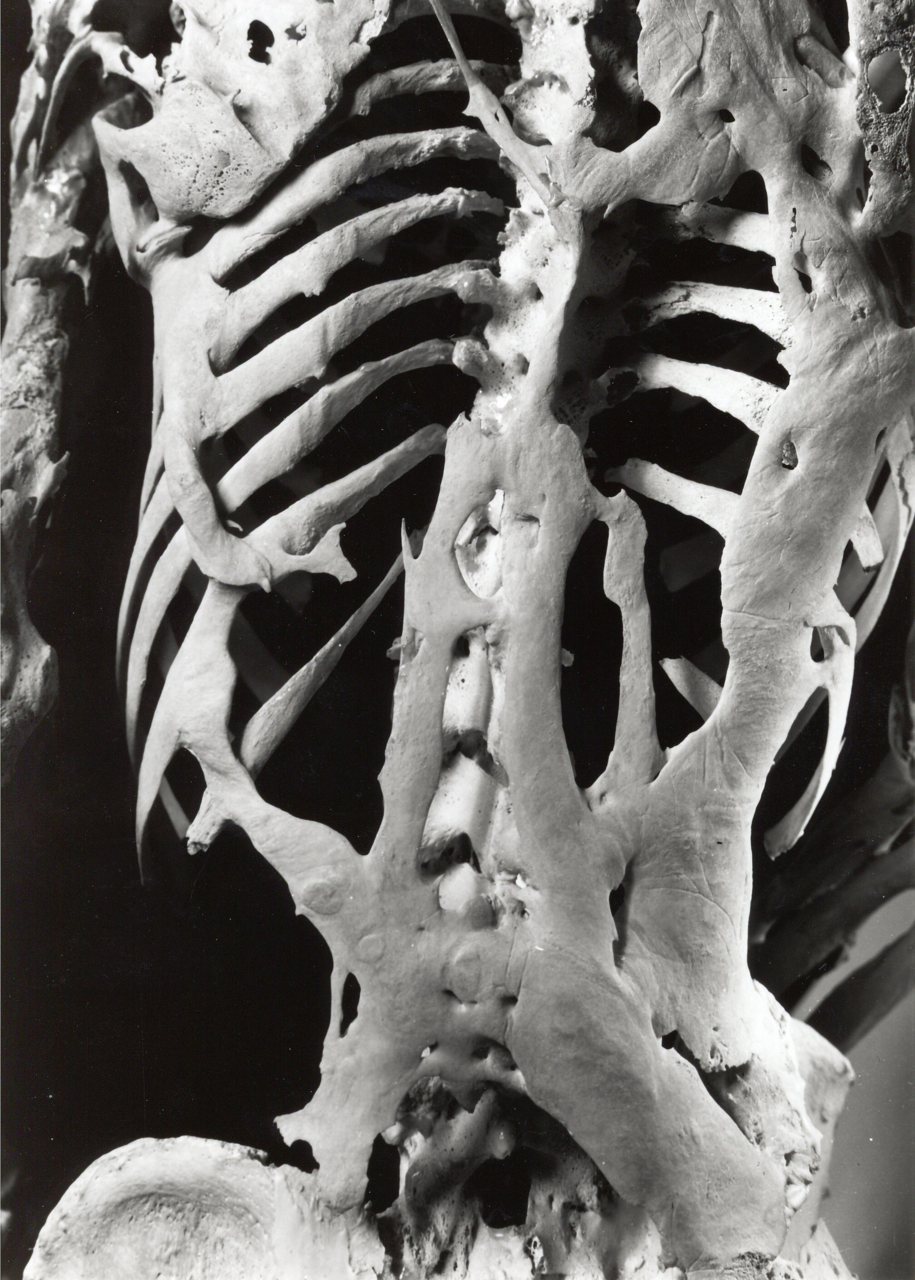

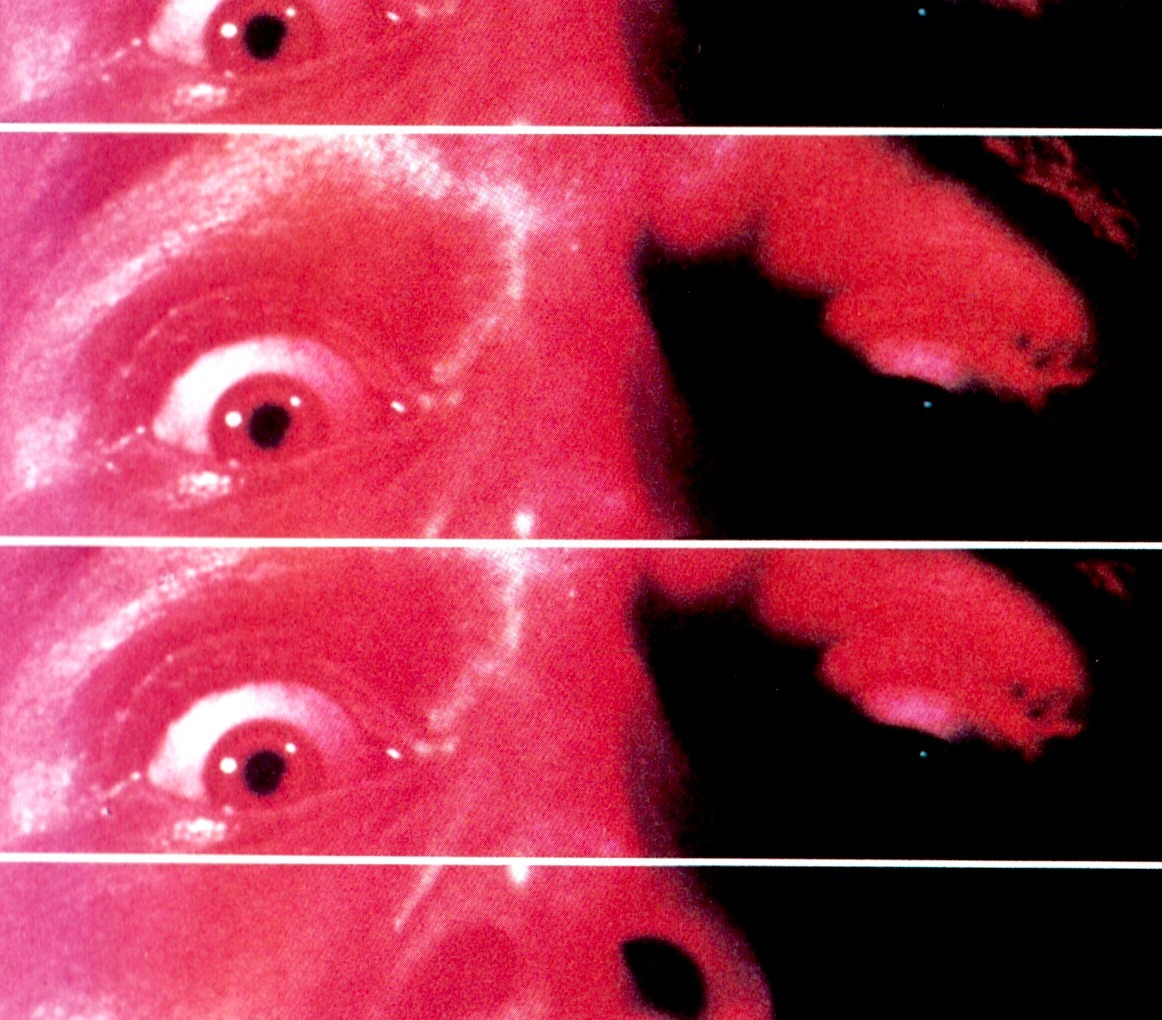
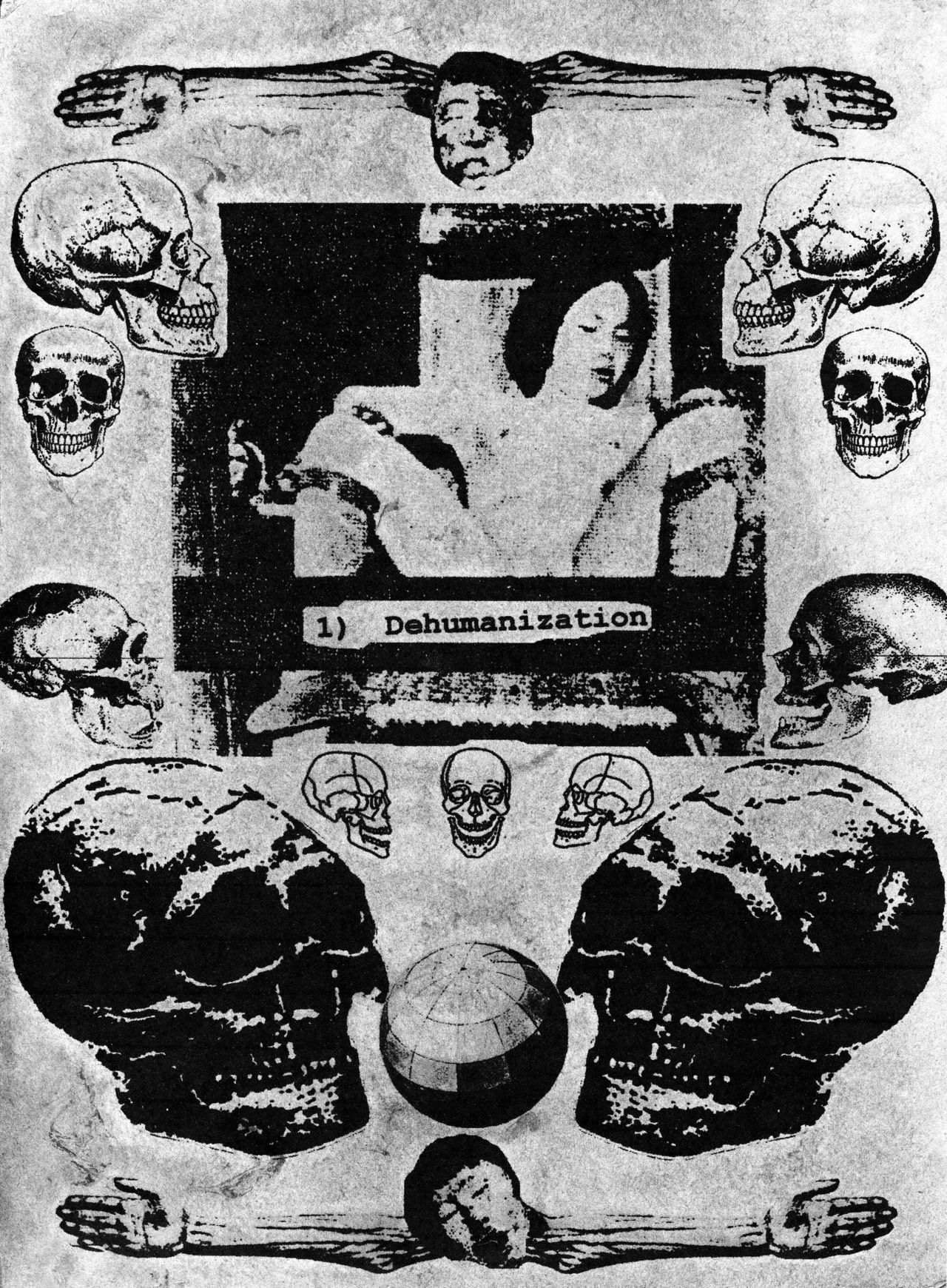



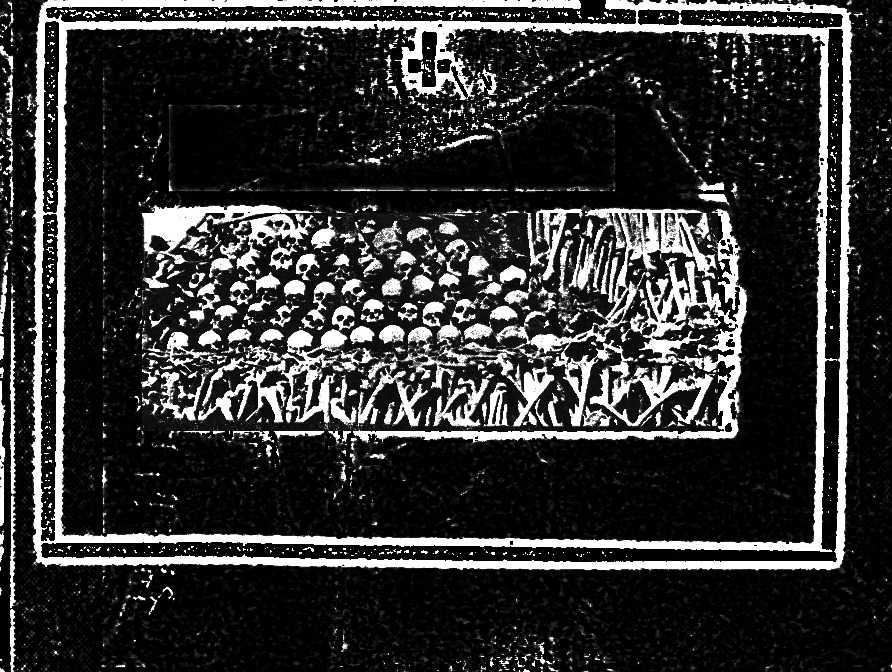
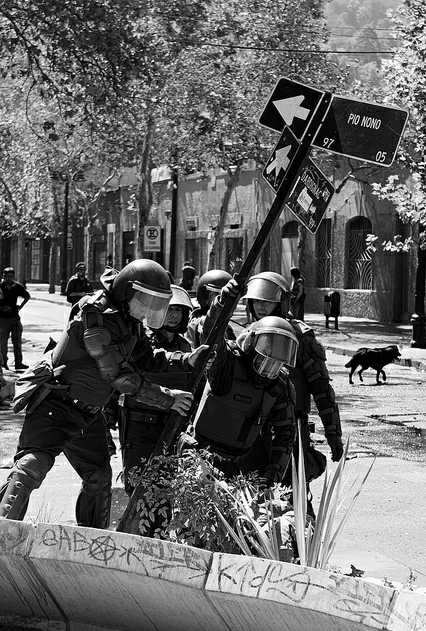



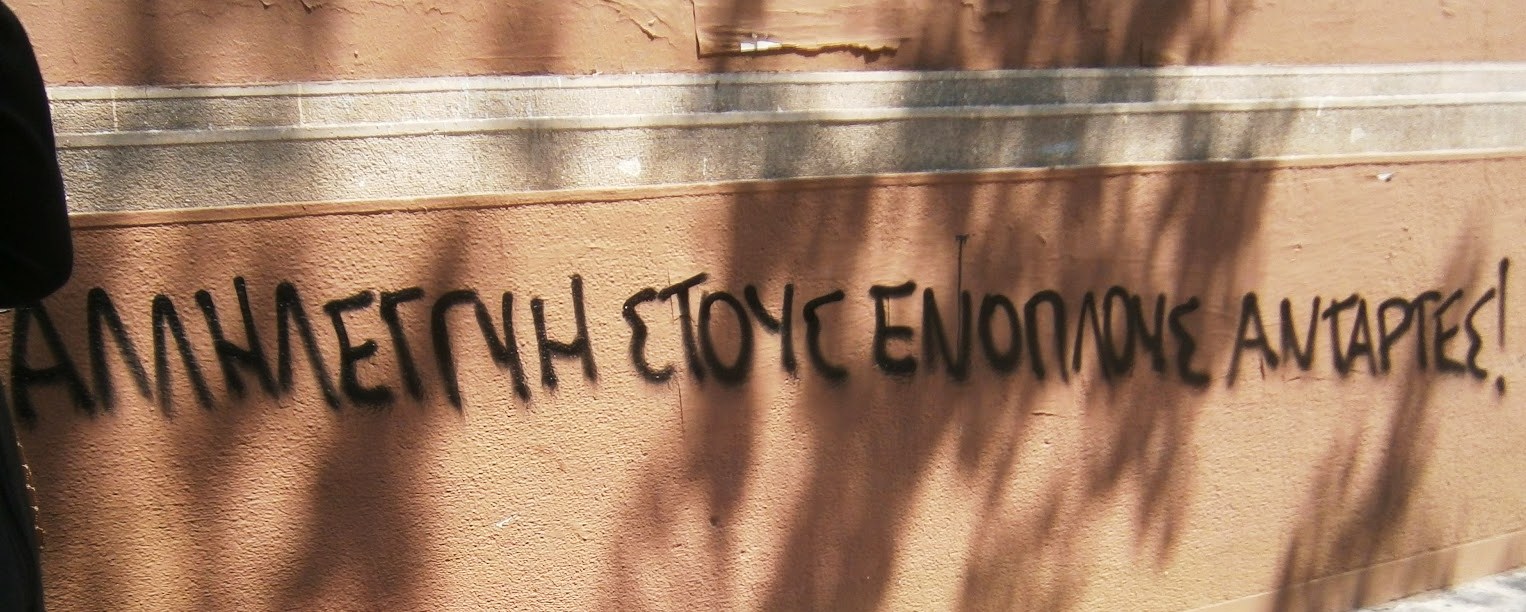

![Eurorepressione - Sulla conferenza a Den Haag sul tema "Anarchia" [corretto]](http://25.media.tumblr.com/tumblr_m0jvngOXtY1qa2163o1_1280.jpg)
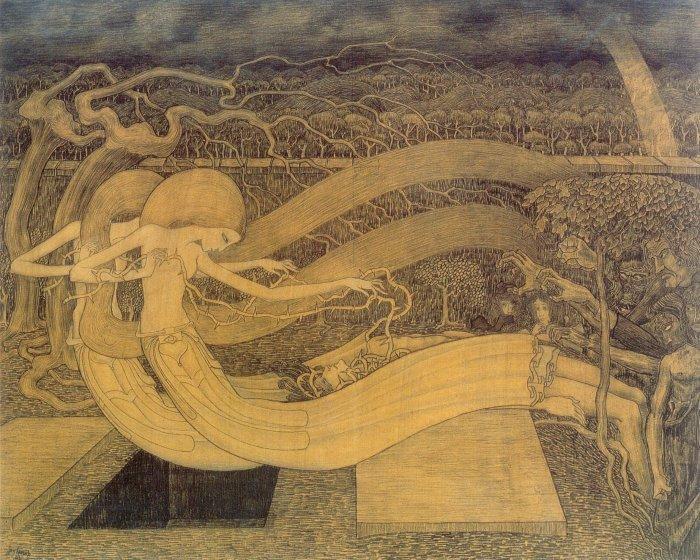
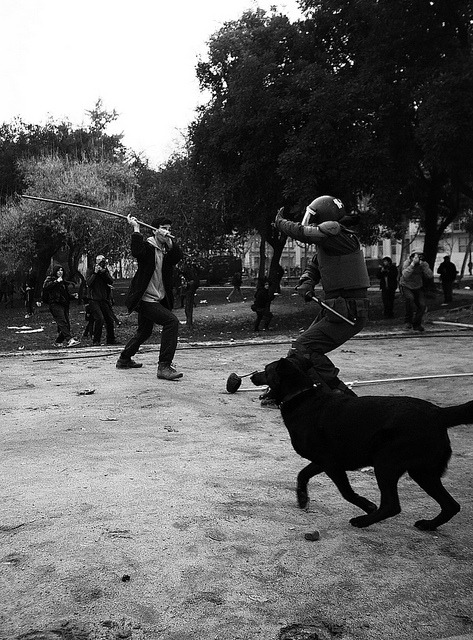
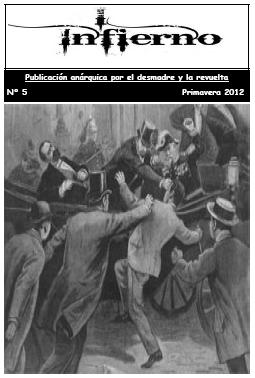
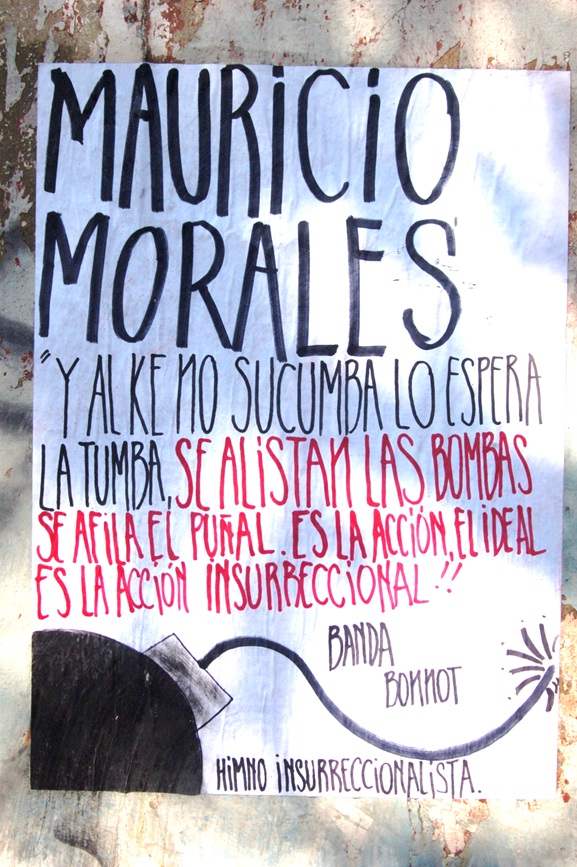
![A tres años de la Partida de Mauricio Morales: De la Memoria a la Calle [Stgo.]](http://metiendoruido.com/wp-content/uploads/2012/05/mmacividad.jpg)
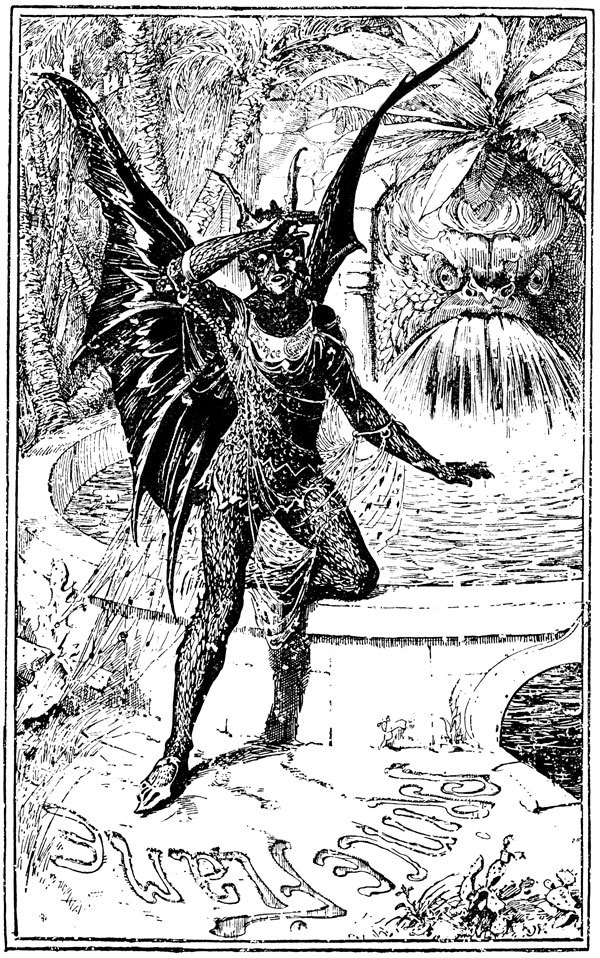
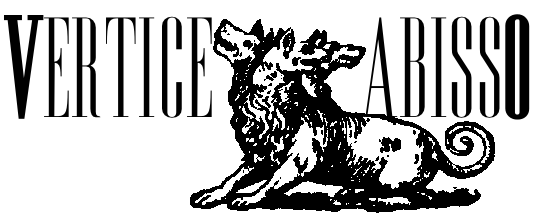



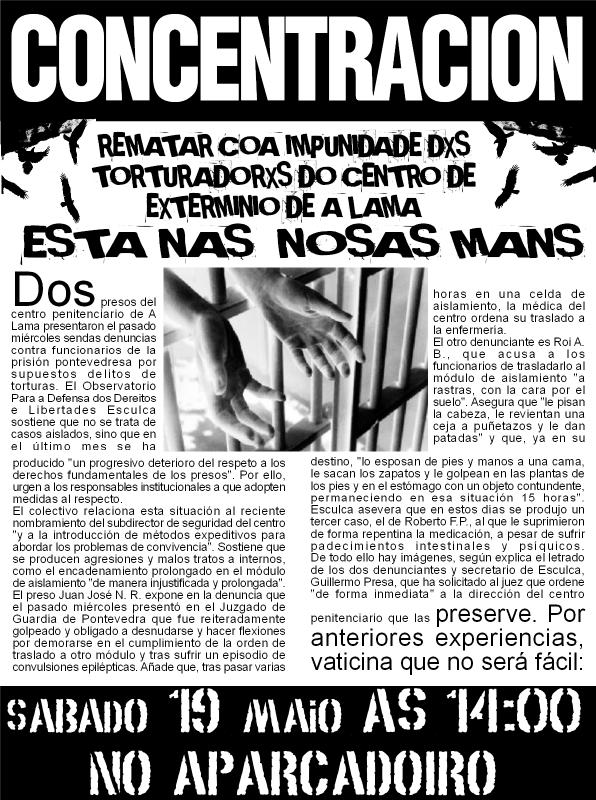

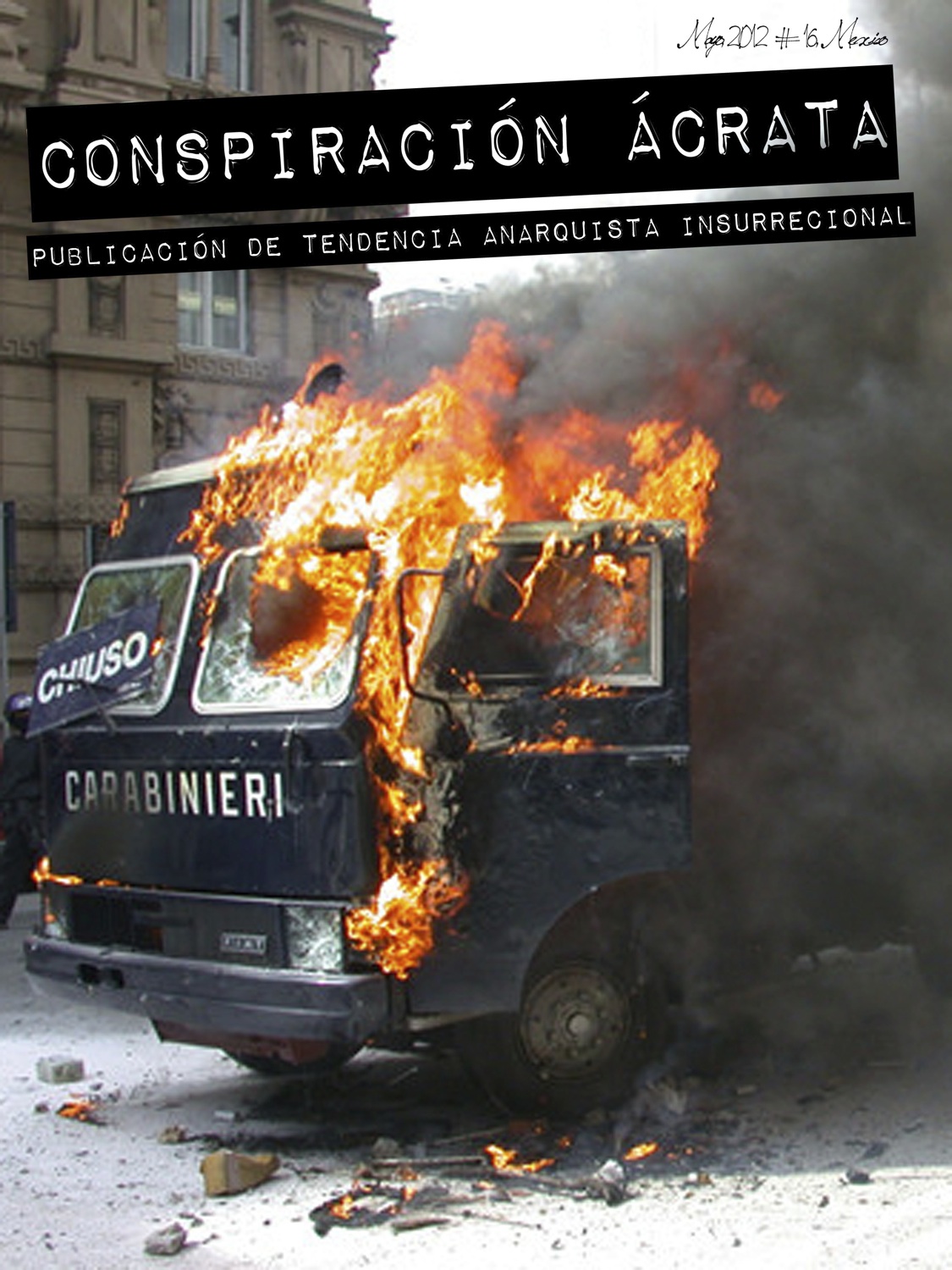
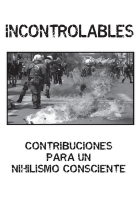
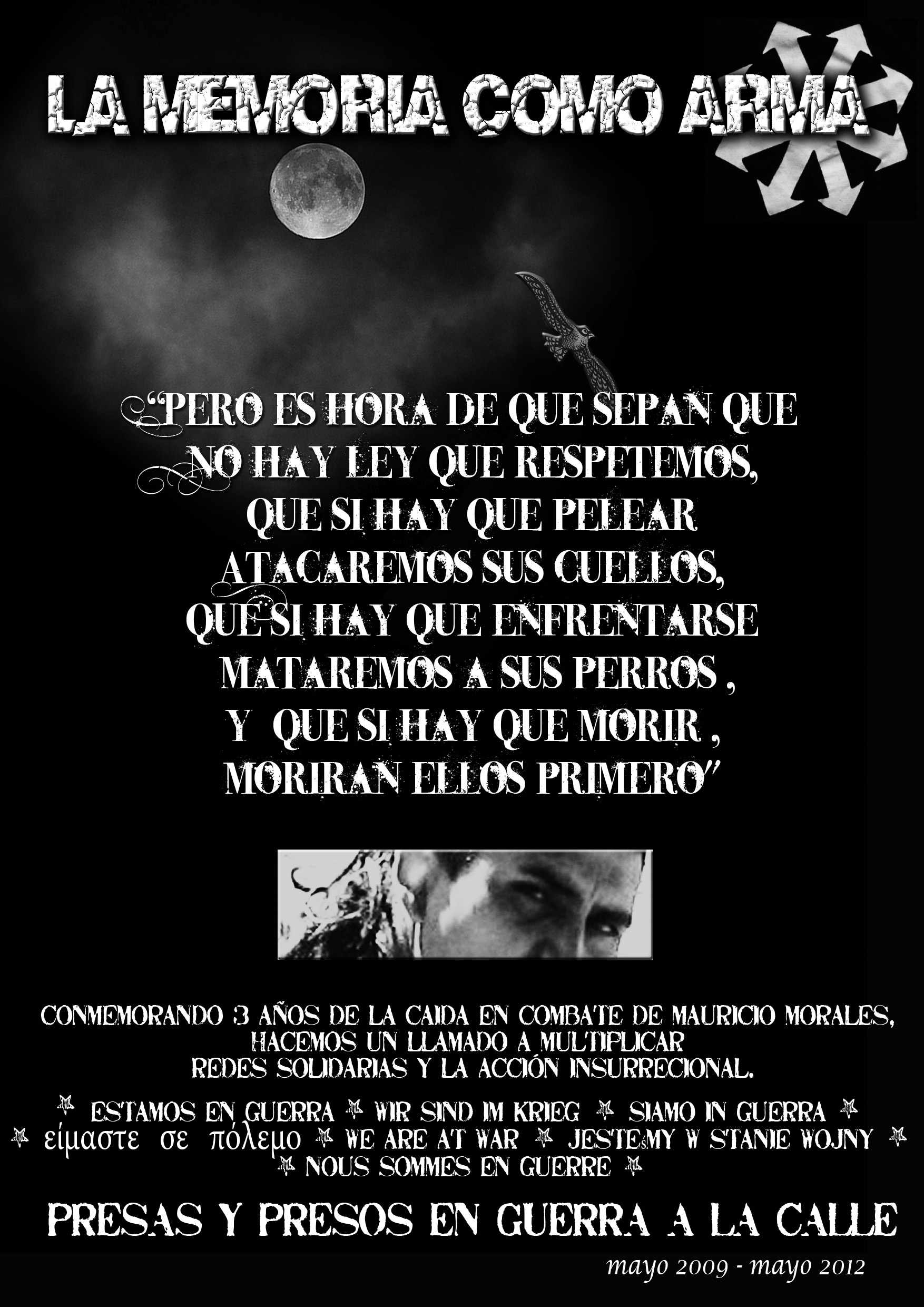
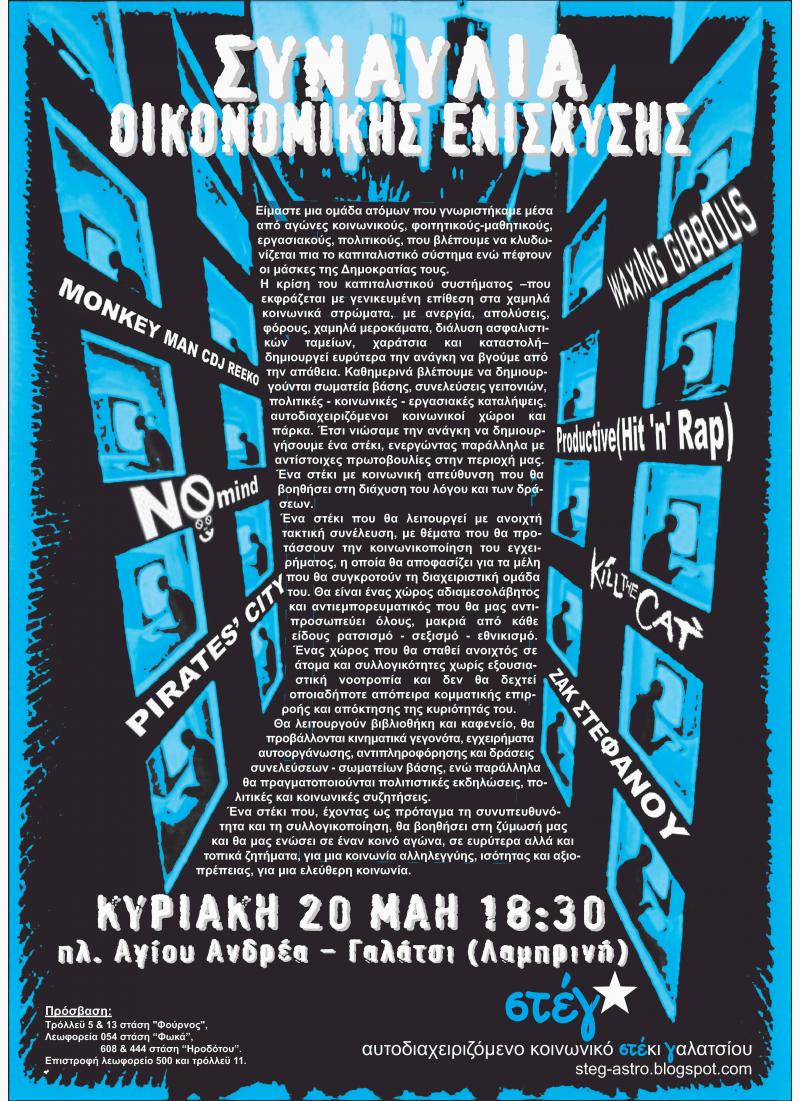








Nessun commento:
Posta un commento